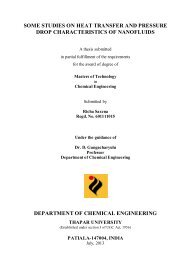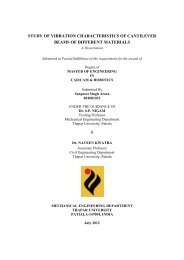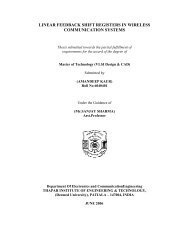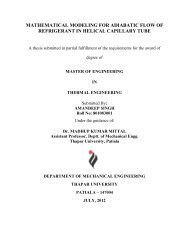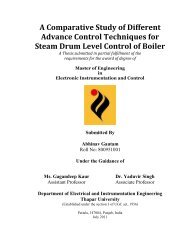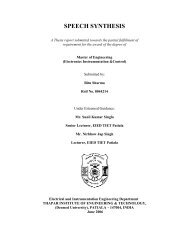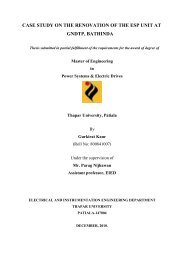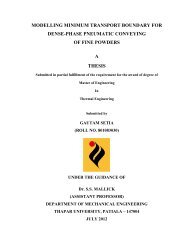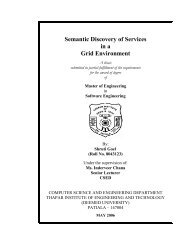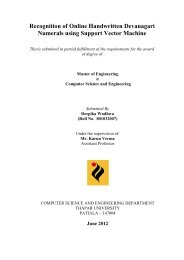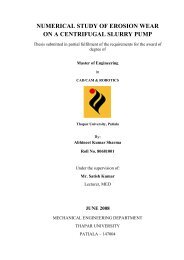from indigenous fermented foods and human gut ... - Thapar University
from indigenous fermented foods and human gut ... - Thapar University
from indigenous fermented foods and human gut ... - Thapar University
Create successful ePaper yourself
Turn your PDF publications into a flip-book with our unique Google optimized e-Paper software.
123<br />
Chapter V Discussion<br />
compounds are known to have bacteriostatic properties at least in vitro (Suskovic et al.,<br />
1997). Hence, if they also present this bacteriostatic activity in vivo, bacteria tolerant to<br />
phenols might have more chances of survival than those which were not. In contrast to the<br />
high phenol resistance (resistance to 0.4% phenol) which was previously reported by<br />
Xanthopoulus et al. (2000) <strong>and</strong> Suskovi et al. (1997) for L. acidophilus strains, the L. casei<br />
LAM-1 strain was highly resistant towards this compound. The results of this study on the<br />
phenol resistance of all Lactobacilli strains suggested that they were moderately tolerant.<br />
A major requirement for probiotic strains is that they should be safe for <strong>human</strong><br />
consumption. In order to assure the safety of bacteria used in food, the European Food Safety<br />
Authority (EFSA) has initiated a ‘Qualified Presumption of Safety’ concept, similar to the<br />
GRAS system in the USA, has the purpose of allowing strains with long history of safe use<br />
<strong>and</strong> status to enter the market without extensive testing requirements (EFSA, 2004).<br />
Antibiotic resistance is one of the safety concerns included in the QPS concept to determine a<br />
strain’s QPS status. The reason for this is the hypothesis that food bacteria may act as<br />
reservoirs for antibiotic resistance genes (Chesson et al., 2002; Danielsen <strong>and</strong> Wind, 2003;<br />
Franz et al., 2005). In a survey of 62 Lactobacillus starter strains, Danielsen <strong>and</strong> Wind (2003)<br />
found a high level of resistance to aminoglycosides for all investigated Lactobacilli. Similar<br />
results were also found by Charteris et al. (1998) <strong>and</strong> Katla et al. (2001). These authors<br />
concluded that resistance to aminoglycosides among Lactobacilli is natural, i.e. intrinsic trait,<br />
which has been attributed to the absence of a cytochrome-mediated electron transport which<br />
mediates the uptake of aminoglycosides (Charteris et al., 2001). Danielsen <strong>and</strong> Wind (2003)<br />
also suggested that resistance to ciprofloxacin appeared to constitute a natural or intrinsic<br />
resistance. In view of these deliberations, antibiotic resistances observed for the strains in this<br />
study, i.e. resistance towards ciprofloxacin <strong>and</strong> aminoglycosides may consider being intrinsic



